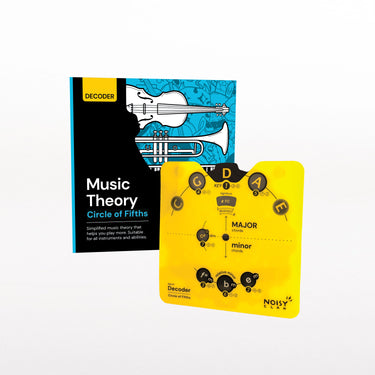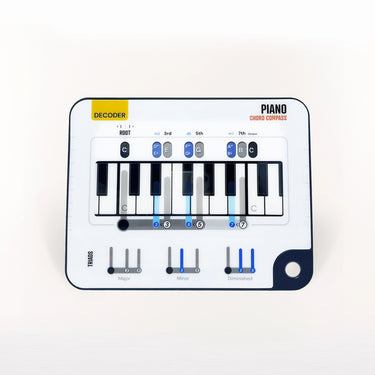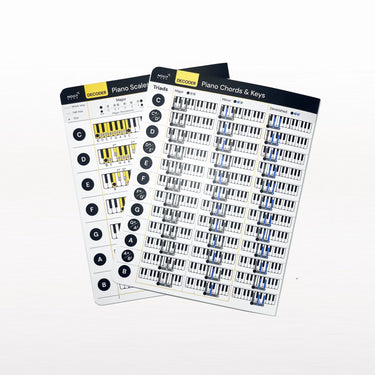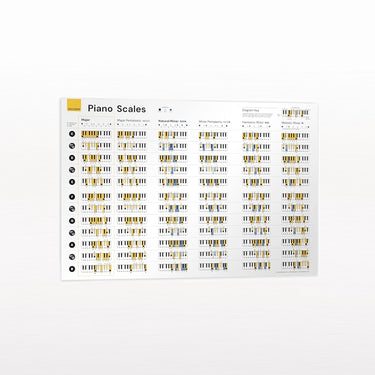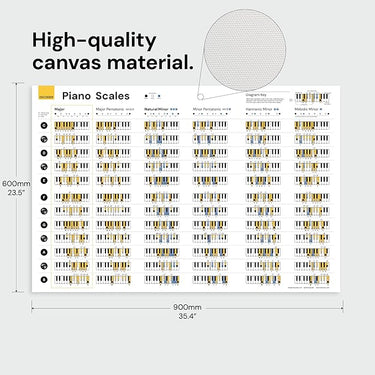
If you're learning piano and wondering how to play the songs you love, you're in the right place. Piano chords are the foundation of countless hits across genres—from pop to rock to ballads. Mastering a handful of chords opens the door to playing hundreds of songs, even if you're just starting out. The beauty of music is that complexity often comes from simplicity. Ready to dive in? Let's make those piano lessons fun and practical!
Why Chords Are the Key to Pop Music
What do songs like "Let It Be" by The Beatles, "Someone Like You" by Adele, and "Shallow" by Lady Gaga and Bradley Cooper have in common? They’re built on a few simple chords! Most pop songs rely on chord progressions—patterns of chords that repeat throughout the song.
The secret sauce of pop music is that it’s designed to be memorable and easy to sing along to, so it tends to favor repetitive, simple chord structures. For us pianists, this is great news because it means we can start playing our favorite songs with just a few chords under our belts.
The Magic Four-Chord Formula
Many of the most iconic pop songs are built around the same four chords:
-
C Major (C - E - G)
-
G Major (G - B - D)
-
A Minor (A - C - E)
-
F Major (F - A - C)
But why do these chords work so well together? The secret lies in chord progressions. A chord progression is simply a sequence of chords played in a specific order that creates musical tension and resolution—aka, the thing that makes songs feel satisfying.
One of the most famous progressions in pop music is the 1-5-6-4 progression.
Examples of Songs with the Magic Four:
-
"Someone Like You" by Adele: Try the chords A Minor - F Major - C Major - G Major to recreate the verse.
-
"Let It Be" by The Beatles: Use C Major - G Major - A Minor - F Major for the main progression.
-
"No Woman, No Cry" by Bob Marley: Switch between C - G - A Minor - F and feel the vibe.
Other popular chord progressions are all shown on the back of the Decoder: Circle of Fifths
Beginner Exercise: Practice switching between these four chords in different orders. Once you're comfortable, try playing them along to one of the songs above.
What About More Complex Progressions?
As you gain confidence, you’ll encounter more nuanced chord progressions. These might include sevenths, diminished chords, or inversions. For example:
-
"Fly Me to the Moon" by Frank Sinatra features jazzy progressions like A Minor 7 (Am7) - D Minor 7 (Dm7) - G7 - C Major 7 (Cmaj7).
-
"All of Me" by John Legend uses E Minor - C - G - D, but with some extended chords for extra depth.
Advanced Exercise: Take one of the progressions from the songs above and try adding inversions or extensions like Cmaj7 or Am7. This can make your playing sound richer and more professional.
How the Chord Compass Simplifies Learning
The Chord Compass by Noisy Clan is a game-changer for anyone learning piano. This handy tool lays out the 1-3-5 formula for building chords, making it super easy to visualize what you’re playing.
Let’s say you want to play B Major:
-
Find B (the root).
-
Add the third note (D#).
-
Add the fifth note (F#).
Voilà! You’ve built a B Major chord.
How It Helps:
-
For beginners: The Chord Compass takes the guesswork out of finding chords.
-
For advanced players: It helps you quickly explore extensions like D7 (D - F# - A - C) or diminished variations.
Songs That Rely on Just Three Chords
Believe it or not, many hits use just three chords! Here are a few examples:
-
"Sweet Home Alabama" by Lynyrd Skynyrd: D - C - G
-
"Zombie" by The Cranberries: E Minor - C - G
-
"Hound Dog" by Elvis Presley: C - F - G
Beginner Exercise: Pick one of these songs and focus on playing the three chords in rhythm. Remember, it’s not about speed—it’s about consistency and clarity.
Get Creative: Adding Your Own Spin
One of the joys of learning piano is improvisation. Once you’ve mastered the basics, try putting your own twist on pop songs. For example:
-
Use arpeggios (playing the notes of a chord one at a time) instead of block chords.
-
Experiment with dynamics—start softly and build to a crescendo.
-
Add basslines with your left hand while playing chords with your right.
Advanced Exercise: Take a progression like Am - F - C - G and play it in different styles:
-
Ballad style: Use slow arpeggios.
-
Rock style: Play in a strong, rhythmic pattern.
-
Jazz style: Add sevenths or diminished chords for complexity.
Let’s Talk About Minor Chords
While major chords are bright and happy, minor chords add emotion and depth. Some songs blend major and minor chords for a balanced sound.
Examples:
-
"Someone Like You" by Adele: A mix of A Minor and C Major sets the reflective tone.
-
"Nothing Else Matters" by Metallica: Uses Em - C - G - D to create a haunting atmosphere.
Joke Break: Keep It Fun!
Why was the piano player always calm?
Because they knew how to stay "in tune" with their emotions!
Alright, let’s get back to learning those pop hits.
Practice Tips for Building Chord Progressions
When practicing, focus on:
-
Smooth transitions: Aim for seamless changes between chords.
-
Timing: Use a metronome to stay consistent.
-
Experimentation: Don’t just copy—create your own progressions!
Why Noisy Clan?
At Noisy Clan, we’re passionate about making learning piano accessible and enjoyable. Our Chord Compass is designed to simplify complex music theory so you can focus on playing.
Sign up with your email to access exclusive downloads, tips, and tools that will take your piano lessons to the next level.
For more songs, click here!
Start Playing Today
With just a few piano chords, you can play hundreds of pop songs. Whether you’re strumming your way through Adele’s ballads or rocking out to Metallica, the possibilities are endless. So grab your Chord Compass, fire up the piano, and start turning your favorite songs into your own musical journey!
Happy playing! 🎹


